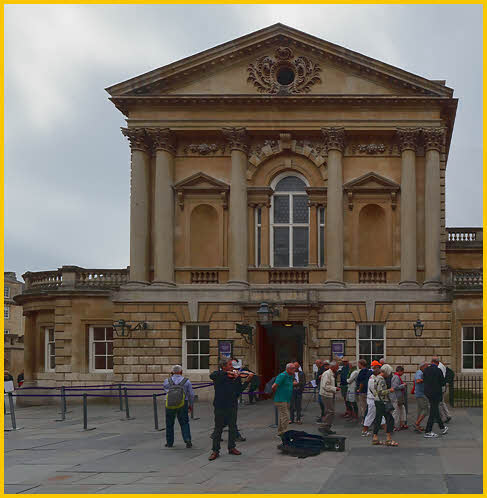United Kingdom-England 4
Roman Baths
 |
The Roman Baths themselves are below the modern street level. There are four main features: the Sacred Spring, the Roman Temple, the Roman Bath House and the museum, holding finds from Roman Bath. The buildings above street level date from the 19th century.
Archaeological evidence indicates that the site of the baths may have been a centre of worship used by Celts; the springs were dedicated to the goddess Sulis, whom the Romans identified with Minerva. The name Sulis continued to be used after the Roman invasion, leading to the towns Roman name of Aquae Sulis. The temple was constructed in 60–70 AD and the bathing complex was gradually built up over the next 300 years. During the Roman occupation of Britain] engineers drove oak piles to provide a stable foundation into the mud and surrounded the spring with an irregular stone chamber lined with lead. In the 2nd century it was enclosed within a wooden barrel-vaulted building, and included the caldarium (hot bath), tepidarium (lukewarm bath), and frigidarium (cold bath).
